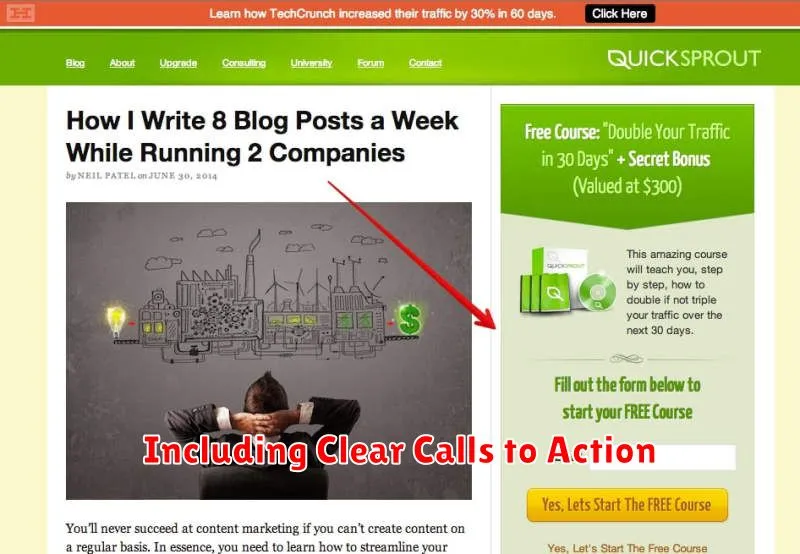In today’s digital landscape, a blog serves as a powerful marketing tool, capable of driving traffic, generating leads, and establishing brand authority. However, simply creating a blog is not enough. To truly harness its potential, you must optimize your blog for maximum marketing impact. This involves strategically crafting content, utilizing effective SEO practices, and promoting your blog across various platforms. Optimizing your blog not only increases visibility but also enhances user engagement and drives conversions, making it a crucial component of any successful marketing strategy.
This article provides a comprehensive guide to optimizing your blog for maximum marketing impact. We will delve into the essential elements of blog optimization, encompassing keyword research, content creation, SEO best practices, and promotion strategies. By implementing these techniques, you can transform your blog from a passive platform into a dynamic marketing engine, driving significant results for your business. Whether you are a seasoned blogger or just starting out, this guide will equip you with the knowledge and tools to maximize your blog’s potential and achieve your marketing goals.
Choosing the Right Topics for Your Audience
Understanding your audience is crucial for effective blog marketing. Choosing the right topics ensures your content resonates with them, driving engagement and ultimately achieving your marketing goals.
Start by identifying your target audience’s interests and needs. What are their pain points? What information are they seeking? Conduct thorough keyword research to discover what your audience is searching for online. Tools like Google Keyword Planner can help you identify relevant keywords with high search volume.
Consider the stage of the buyer’s journey your audience is in. Are they just beginning to research a problem, or are they ready to make a purchase? Tailor your topics to address their specific needs at each stage. For example, top-of-the-funnel content might focus on broader industry trends, while bottom-of-the-funnel content could delve into specific product features and benefits.
Analyze your competitors’ blogs to identify trending topics in your industry. This can provide valuable insights into what resonates with your target audience and inspire new content ideas. However, don’t simply copy your competitors. Instead, strive to offer a unique perspective or add value by providing more comprehensive information.
Using Keyword Research to Guide Content

Keyword research is essential for creating content that resonates with your target audience and ranks well in search engine results. By understanding the terms people use when searching for information related to your blog’s niche, you can tailor your content to meet their specific needs.
Identifying relevant keywords is the first step. Use keyword research tools to discover high-volume, low-competition keywords that align with your blog’s topics. Consider both short-tail (single words or phrases) and long-tail (longer, more specific phrases) keywords.
Once you have a list of target keywords, strategically incorporate them into your content. Use them naturally within your titles, headings, body text, and meta descriptions. Avoid keyword stuffing, which can negatively impact your search engine rankings.
Analyzing keyword performance over time is crucial. Track your rankings for target keywords and monitor which pieces of content are driving the most organic traffic. This data can inform future content strategy and help you refine your keyword targeting.
Optimizing Headers and Meta Tags
Headers and meta tags play a crucial role in both search engine optimization (SEO) and user experience. Properly optimized headers and meta tags can significantly improve your blog’s visibility and click-through rates.
Header Tags (H1-H6)
Use header tags to structure your content logically. The H1 tag should be reserved for the main title of your blog post, clearly indicating the topic. Subsequent headers (H2-H6) should be used to organize sub-sections, creating a hierarchical structure that is easy for both search engines and readers to understand. Incorporate relevant keywords within your header tags, but avoid keyword stuffing.
Meta Descriptions
Meta descriptions are brief summaries of your blog post’s content that appear in search engine results. While not a direct ranking factor, compelling meta descriptions can significantly impact click-through rates. Keep them concise (under 160 characters) and include a call to action to encourage users to click.
Title Tags
Title tags are arguably the most important meta tag. They act as the title of your page in search results and browser tabs. Keep them concise (under 60 characters), descriptive, and incorporate your primary keyword. A well-crafted title tag can dramatically improve your blog’s visibility.
Adding Internal and External Links
Strategically incorporating both internal and external links is crucial for optimizing your blog’s marketing impact. Internal links connect various pages within your own website, guiding users to related content and encouraging them to explore further. This strengthens site navigation and can improve your search engine rankings.
External links, on the other hand, point to reputable sources outside your domain. Linking to authoritative websites strengthens the credibility of your content and provides additional value to your readers. Be mindful of the quality and relevance of the external resources you choose. Linking to spam or low-quality sites can negatively impact your blog’s reputation.
Balance is key. Overloading your content with too many links can appear spammy and detract from the user experience. Focus on using links purposefully, where they add genuine value and enhance the reader’s understanding.
Including Clear Calls to Action

A compelling call to action (CTA) is crucial for converting blog readers into engaged users and potential customers. Without a clear directive, readers may enjoy your content but fail to take the next step.
Effective CTAs should be concise, action-oriented, and relevant to the blog post’s topic. Consider what action you want readers to take after reading your content. Do you want them to subscribe to your newsletter, download a resource, request a demo, or visit a product page?
Examples of effective CTAs:
- “Download our free ebook to learn more.”
- “Sign up for our newsletter to stay updated.”
- “Request a demo to see our product in action.”
Placement of your CTA is equally important. Consider including CTAs at the end of your blog post, within the body of the text where relevant, or even as a floating bar. Experiment with different placements to find what works best for your audience.
Testing and iterating on your CTAs is key to maximizing their effectiveness. Analyze your data to see which CTAs are performing best and make adjustments accordingly.
Sharing Across Social Channels
Social media plays a vital role in expanding your blog’s reach. Sharing your content across various platforms exposes it to a wider audience and drives traffic back to your website.
Identify the key social media channels relevant to your target audience. Focus your efforts on platforms where your audience is most active. This targeted approach maximizes your impact and avoids spreading your resources too thin.
Tailor your message for each platform. What works on Twitter might not resonate on LinkedIn. Consider the character limits, language style, and overall tone of each platform when crafting your social media posts.
Consistency is key. Establish a regular posting schedule to keep your audience engaged and maintain a consistent presence. Utilize scheduling tools to plan and automate your posts for efficiency.
Measuring Performance With Analytics
Analyzing your blog’s performance is crucial for maximizing its marketing impact. Analytics provide the necessary data to understand what’s working and what needs improvement. By tracking key metrics, you can make informed decisions to optimize your content and strategy.
Key metrics to monitor include website traffic, bounce rate, time on page, and conversion rates. Understanding these metrics provides insights into audience engagement and content effectiveness.
Website traffic indicates the number of visitors to your blog. A higher traffic volume suggests greater reach and potential for conversions. Bounce rate reveals the percentage of visitors who leave your site after viewing only one page. A high bounce rate may signal issues with content relevance or user experience. Time on page measures how long visitors spend engaging with your content. Longer durations often correlate with higher quality content and increased user interest. Finally, conversion rates track the percentage of visitors who complete a desired action, such as subscribing to your newsletter or making a purchase. This metric directly reflects the effectiveness of your blog in achieving marketing goals.

